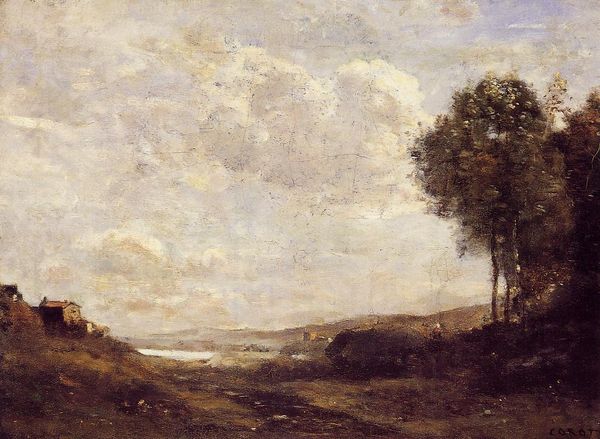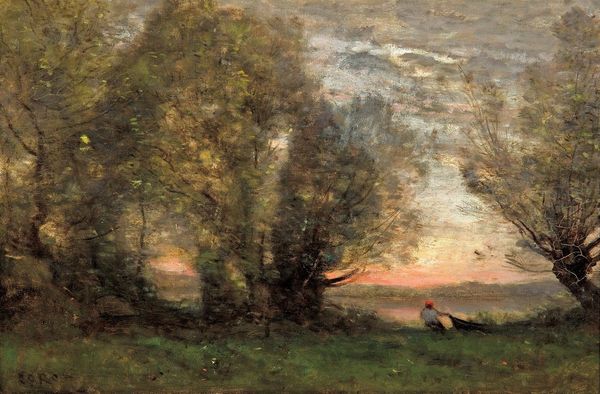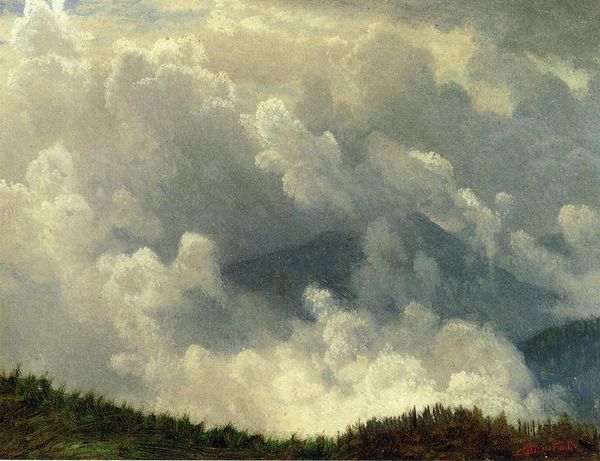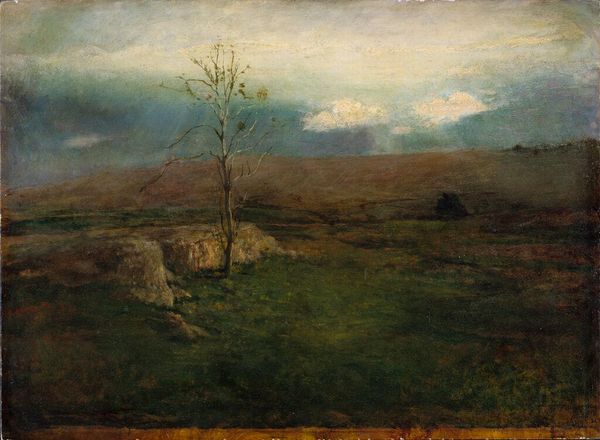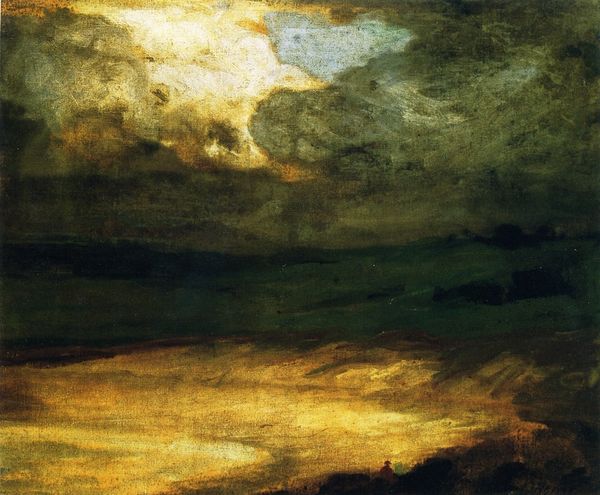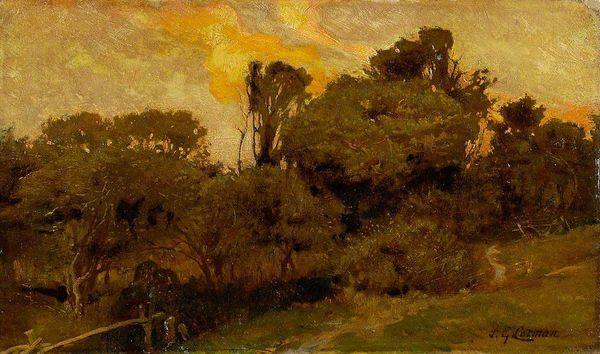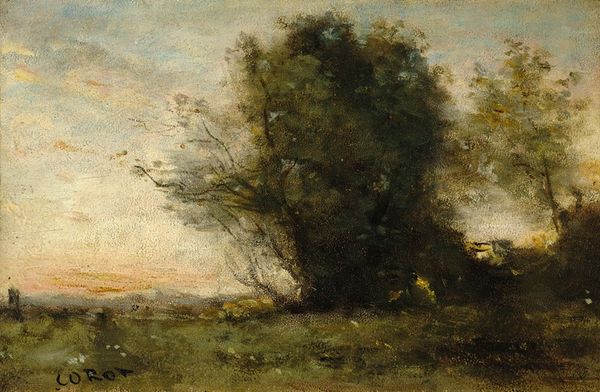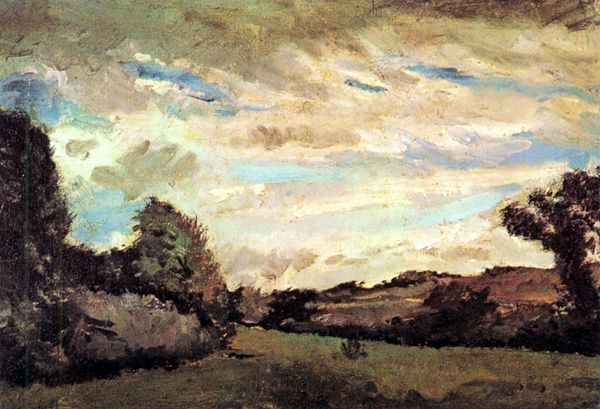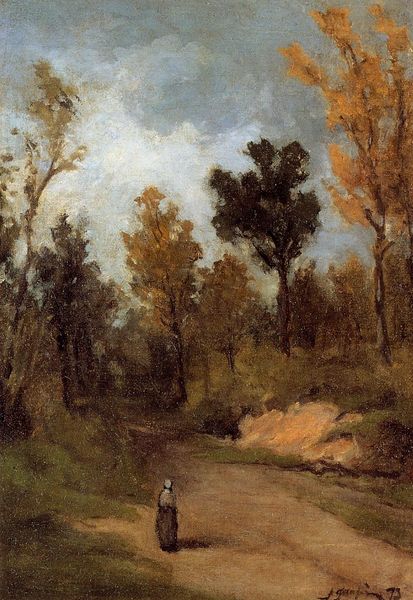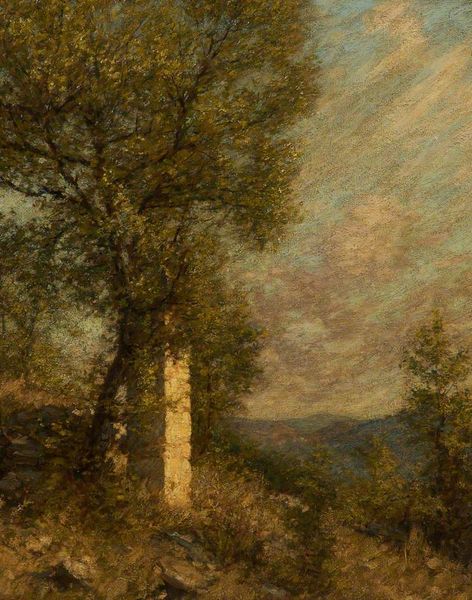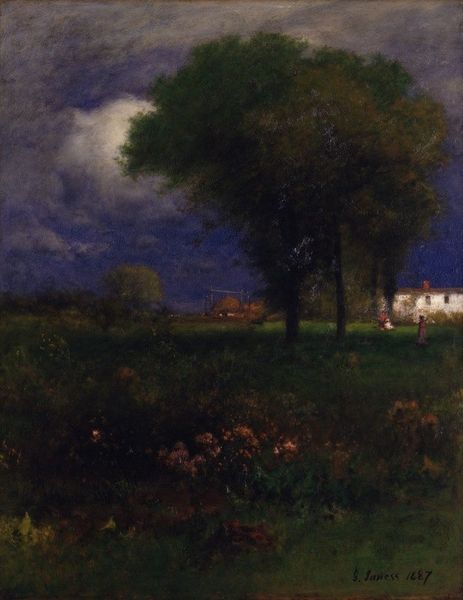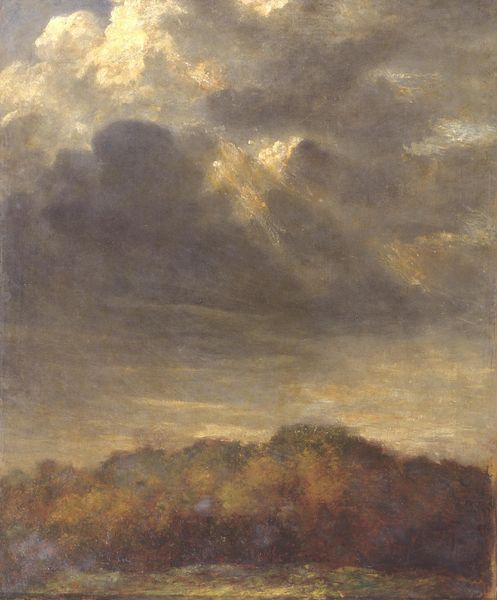
Copyright: Public domain
Curator: Ah, the vast, moody landscapes of the late 19th century. Take a look at this painting; it’s “Man on a Horse” by Edward Mitchell Bannister, created in 1884 using oil paint in a plein-air style. Editor: Wow. It's giving me Wuthering Heights vibes, all brooding skies and lonely pathways. It's a very dramatic and kind of wild—does the actual subject even matter? Is there even a man on that horse, or is that more of a feeling than an object? Curator: Bannister was an interesting figure. He was African American and part of the burgeoning art scene in post-Civil War Boston and Providence. It’s essential to remember the historical context in which he was working—he had to grapple with issues of representation and access as a Black artist working in a predominantly white space. It's amazing that he became an artist known for idyllic rural paintings, quite different from his contemporaries. Editor: Interesting... you wouldn’t necessarily expect those idyllic scenes, given everything. But that adds another layer of depth. The rider looks to be almost swallowed by the enormity of the landscape, as a little smudge there near the painting’s middle point, don’t you think? I mean, maybe that’s the point—a Black man carving out space and existing against so much immensity. Curator: Precisely! This piece demonstrates the power of romanticism, that intersectional look at both figure and setting, in expressing not just individual experiences, but also broader issues of belonging and identity within social and natural worlds. Even today, Bannister's style feels accessible because it deals with universal ideas such as loneliness or marginalization, particularly if considered against wider themes of racial prejudice during the reconstruction period following the American Civil War. Editor: So well said. When you put it all together like that, you feel a sense of yearning, don't you? Like wanting to belong, even when forces conspire against it. I'm definitely seeing the landscape, not just as some backdrop or scenery but a psychological metaphor. I also find that interesting from the plein-air technique because this wasn't done inside but while immersing himself with nature and with its psychological counterpart? This gives it even greater resonance and gravitas. Curator: It absolutely adds something. I will definitely keep this painting and Bannister’s social-historical landscape view differently now. Editor: Likewise, a ride to remember for sure.
Comments
No comments
Be the first to comment and join the conversation on the ultimate creative platform.
